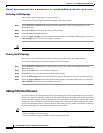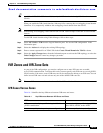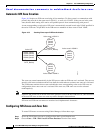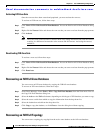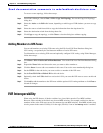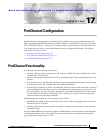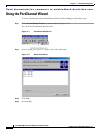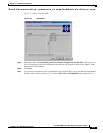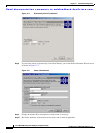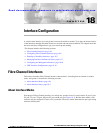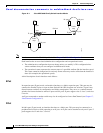
CHAPTER
Send documentation comments to mdsfeedback-doc@cisco.com.
17-1
Cisco MDS 9000 Family Fabric Manager Configuration Guide
OL-6965-03, Cisco MDS SAN-OS Release 2.x
17
PortChannel Configuration
PortChannels refer to the aggregation of multiple physical interfaces into one logical interface to provide
higher aggregated bandwidth, load balancing, and link redundancy. PortChannels can connect to interfaces
across switching modules, so a failure of a switching module cannot bring down the PortChannel link.
This chapter describes how to use the PortChannel wizard to configure PortChannels. This chapter
contains the following sections:
• PortChannel Functionality, page 17-1
• Using the PortChannel Wizard, page 17-2
• Modifying PortChannels, page 17-5
PortChannel Functionality
A PortChannel has the following functionality:
• Provides a point-to-point connection over ISL (E ports) or EISL (TE ports). Multiple links can be
combined into a PortChannel.
• Increases the aggregate bandwidth on an ISL by distributing traffic among all functional links in the
channel.
• Load balances across multiple links and maintains optimum bandwidth utilization. Load balancing
is based on the source ID, destination ID, and exchange ID (OX ID).
• Provides high availability on an ISL. If one link fails, traffic previously carried on this link is switched
to the remaining links. If a link goes down in a PortChannel, the upper protocol is not aware of it. To
the upper protocol, the link is still there, although the bandwidth is diminished. The routing tables
are not affected by link failure. PortChannels may contain up to 16 physical links and may span
multiple modules for added high availability.
PortChanneling and trunking are used separately across an ISL:
• PortChanneling, which enables several links to be combined into one aggregated link, can be done
between E ports and TE ports.
• Trunking, which permits carrying traffic on multiple VSANs between switches, can be done only
between TE ports.
The Cisco MDS 9000 Family of switches supports 128 PortChannels with 16 interfaces per PortChannel.
A PortChannel number refers to the unique (to each switch) identifier associated with each channel
group. This number ranges from 1 to 128.




